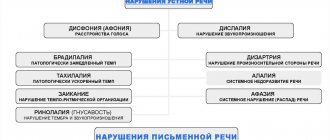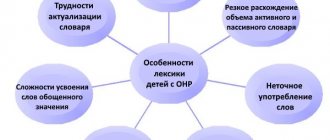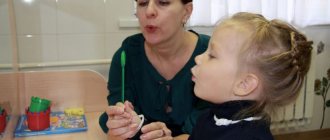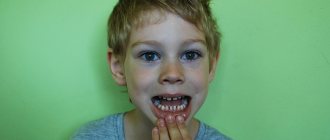Correction of speech disorders is a branch of speech therapy that considers methods for solving problems of speech motor skills, verbal communication and other deviations. Symptoms of diseases can be varied - from speech incontinence to the inability to perceive the words of others. Speech therapy diseases occur in both adults and children. Correction methods are selected depending on the characteristics of the pathology, age and stage of development of the disease.
The concept of speech correction. Reasons for deviations
In speech therapy, correction is a set of techniques aimed at eliminating speech defects and mechanisms that led to the development of deviations. There are a large number of causes for the development of defects, which are classified into the following groups:
- postpartum;
- complications during childbirth;
- hereditary;
- congenital.
Functional causes also include psychosomatic, endocrine and environmental ones. This category includes pathologies caused by disorders of organs involved in speech. Speech therapy correction is aimed at correcting all of the above defects using various methods and techniques.
Classification of speech defects in children and adults
In modern speech therapy, all types of speech disorders are considered within two classification systems - psychological-pedagogical and clinical-pedagogical. These two approaches to the diagnosis and correction of pathologies do not have significant contradictions, since they consider the same phenomena from different points of view and reflect different approaches to eliminating speech problems.
All types of violations are distributed between two large groups - violations of internal and external speech. In addition, deviations can be observed in oral or written speech. There are situations in which difficulties appear in both of these areas simultaneously. A speech therapist's lessons on correcting speech disorders can take into account both a psychological-pedagogical and a clinical-pedagogical approach.
Features of alalia
Alalia is a speech disorder caused by an organic disorder of the cortical speech areas of the brain. The pathology develops during intrauterine development or in the first three years of a child’s life. The disease can manifest itself in systemic underdevelopment or complete absence of speech. As a rule, with alalia, the child’s hearing and intelligence remain at a normal level.
Dysarthria - pronunciation disorder
Dysarthria is a specific speech disorder that is caused by a disorder of the articulatory apparatus and speech motor analyzer. This pathology is characterized by organic damage to the cortical speech areas of the brain. That is why, when correcting speech in this case, it is necessary to contact not only a speech therapist, but also a neurologist.
Dysarthria is not a rare speech therapy disease and occurs in almost 5% of children under 12 years of age
Brief characteristics of aphasia
Aphasia is a specific speech disorder caused by local damage to the speech centers of the brain. The disease manifests itself in a decrease in the level of intelligence, poverty of speech and muteness. The pathology is psychogenic in nature and difficult to correct.
Often this disease occurs in older people after a stroke. The inability to reproduce words and communicate with others can provoke serious depression. .
Features of stuttering in children and adults
Stuttering is a speech disorder in which the patient frequently repeats sounds, words, or syllables. The disease is characterized by hesitancy in reproducing words or frequent stoppages in speech. There is a gap in the rhythm of word pronunciation. The diagnosis is made only in the presence of significant and pronounced symptoms.
Brief characteristics of dyslalia
Dyslalia is characterized by various defects in sound pronunciation in the absence of hearing impairment. With the disease, the patient mixes, distorts or does not pronounce sounds at all. When diagnosing and making a diagnosis, it is often necessary to seek advice not only from a speech therapist, but also from a dentist, neurologist and otolaryngologist.
Other types of speech disorders
Other speech disorders include:
- rhinolalia;
- tachylalia;
- dysphonia;
- bradyllalia.
Rhinolalia is characterized by defects in the pronunciation of sounds. A common symptom is nasal speech and other abnormalities.
Tachylalia is characterized by the patient's rapid rate of speech. This disease is not accompanied by violations of grammar, phonetics and vocabulary.
Dysphonia is a specific speech disorder characterized by incomplete loss of voice. A characteristic feature of the symptoms is hoarseness, nasal and hoarseness, as well as a characteristic change in voice.
Bradylalia is a disorder in which the patient pronounces words at a slow pace. This pathology may be a consequence of a local brain disease.
Innovative methods for correcting speech disorders article on speech therapy on the topic
Prepared
teacher of State Educational Institution SO Yeshi No. 13
Ekaterinburg
Belyakova Irina Anatolevna
Interactive Metronome
A program created by Interactive Metronome (USA) to overcome speech, attention and behavior disorders associated with timing and movement planning.
Purpose
- children with ADHD,
- autism spectrum disorders (early childhood autism (ECA), Asperger syndrome, autistic conditions),
- mental retardation,
- cerebral palsy,
- speech tempo disturbances,
- children after traumatic brain injuries, spinal cord injuries.
Principle of operation
The Interactive Metronome device (IM - Interactive Metronome) allows you to activate (stimulate) areas of the brain, resulting in improved coordination, attention, memory, perception (including phonemic), cognitive functions, sensory processing, regulation of emotional states and self-regulation. Improves motor functions, rhythm, behavior, reading and writing skills.
IM is an interactive therapeutic computer program. The work is carried out through a touch glove (put on the hand) or a touch panel (step with your foot, moving forward, or with your heel, moving backward). The child must tap the rhythm (clap) with one hand, two hands, or step with one (two) feet, or alternately changing hands and feet. During the session, the child listens to the original metronome ri included in the program. Thus, a deep rhythm is formed, auditory-motor coordination is trained, and a priori the basis is prepared for correcting violations of the syllabic structure of words.
The interactive metronome stimulates brain activity, which is necessary to process sensory information coming from outside. This contributes to the development of the ability to plan one’s activities and stabilizes behavioral reactions. The work is based on the “feedback” principle. The child should clap their hands or stomp their feet in accordance with the rhythmic beeps of the metronome. A sensory glove or sensory mat allows you to evaluate the child’s accuracy in completing a task.
You can start training at the age of 4-5 years.
Tomatis method
The Tomatis Method is a system of auditory training. The goal of the method is to improve the brain's ability to perceive and process auditory information. With the help of training according to the Tomatis method, the listening process is reprogrammed, which, in turn, has a positive effect on understanding spoken language and concentration.
Purpose
- children with autism spectrum disorders (early childhood autism (ECA), Asperger syndrome, autistic conditions),
- attention deficit hyperactivity disorder,
- delays in speech and psychomotor development,
- impairments of written speech (dysgraphia, dyslexia)
- disorders of balance function.
Principle of operation
Many children with completely normal hearing have very poor perception and assimilation of what they hear. It seems that while listening, they are thinking about something of their own, do not delve into the words, are inattentive to what is happening, they have to repeat the same thing many times, they give the impression of being inattentive. In noisy environments (for example, at school or kindergarten), these difficulties are exacerbated. The inability to process and analyze information heard leads to problems in learning and inhibits the development of social skills. Audio-vocal training using the A. Tomatis method allows you to teach the brain to correctly perceive surrounding sounds, identify the most important ones among them, process and analyze even those that the child has not “heard” before.
The operating principle of the Tomatis method is sensory sound stimulation. Sound is transmitted in two ways: bone conduction, caused by vibration in the top of the skull, and air conduction, which transmits sound vibrations through the outer ear. TOMATIS devices are designed to create a unique perceptual sound contrast. This effect causes the muscles of the inner ear to contract and relax. This back-and-forth movement is caused by a sudden transition from low frequencies, which do not require any special training from the hearing aid, to high frequencies, which, on the contrary, require special effort from the hearing system. This action is similar to gymnastics for the ear muscles, since through repeated repetition and progressive mobilization of the muscles, the transmission of sensory sound messages to the brain improves.
The use of this method is possible thanks to a special complex device called the Electronic Ear. During the lesson, the child listens to Mozart's music or Gregorian chants through headphones. At the same time, the ECHO filters the music in a certain way, causing the auditory system to work more efficiently. During training, the child can play, draw or engage in any quiet activity. Electronic Ear filters are adjusted individually for each child.
Contraindications?
- epileptic activity
- acute period of any disease
- severe arterial hypertension
- tumor diseases.
An electroencephalogram is required before the appointment. Classes can begin at 3-4 years of age. Auditory training must be long-term, since the brain learns only after 40-45 hours.
FastForWord
Fast ForWord is a computer correction technique developed by leading American scientists in the field of speech disorders, employees of Scintific Learning.
This is a special computer method for correcting disorders of speech development, auditory perception, understanding and awareness of spoken language. With the help of this program, the language center of the cerebral cortex is trained, subcortical pathways are optimized, which helps improve attention and memory development.
Purpose
- children with disorders of oral and written speech, speech (phonetic-phonemic underdevelopment of speech, general underdevelopment of speech (and when leaving alalia), dysgraphia and dyslexia)
- with pathologies of auditory perception and underdevelopment of the functions of phonemic analysis and synthesis,
- children with attention deficit hyperactivity disorder (ADHD).
- mental development delays,
- attention disorders,
- autism spectrum disorders (ADD, Asperger's syndrome).
Principle of operation
Human speech is a sequence of rapidly changing sound signals, which, entering the brain through the auditory organs, undergo multi-stage processing by various parts of the central nervous system. If the speed of information processing is lower than the speed of its receipt, the child simply does not have the ability to perceive speech by ear. In most cases, he learns to recognize only a certain number of “slow” sounds, and all the “fast” ones that the brain does not have time to process are eliminated by his subconscious. Incorrect perception of speech in the general case leads not only to disturbances in its understanding, but also to corresponding distortions in the reproduction of words. The child tries to speak as he hears, but what he initially hears is the wrong set of phonemes.
In the 70s of the 20th century, American psychologist Paola Tallal conducted a study in which she found that if the speed of presentation of sounds is slowed down, then children with hearing and speech impairments can assimilate them. Special programs were developed that were individually adjusted to the speed of perception of phonemes of each child with subsequent acceleration to the age norm. Experts immediately noted a positive effect: patients learned new words faster and their diction improved significantly. The result looked truly fantastic. This is how the Fast ForWord technique appeared
The name of the program translates as “Running for the Word” or “Quick Word”. This program does not teach the child to speak. Moreover, it is in English. But this does not at all hinder the effectiveness of its use in different countries. This program trains the auditory perception system, that is, it creates the foundation for speech formation.
How does this happen? In many countries, children who begin to speak different languages use typical combinations of vowels and consonants in their babble, such as “da-da-da” and “ba-ba-ba.” The first words that children utter also usually consist of the following combinations: “dad”, “mom”, “baba”.
For a child with speech problems, distinguishing between these similar sounds remains a big problem for a long time. These children's hearing cannot process typical combinations of consonants and vowels that are pronounced quickly. Children do not have time to hear the beginning of a syllable or how sounds change within a syllable.
This inability to cope with a basic task disrupts all aspects of the child’s language development. The child spends a lot of effort and time trying to distinguish sounds and understand which word was spoken. This causes problems with understanding speech, the pronunciation side of speech, reading and writing. But the problem can be solved with the help of special training.
The Fast ForWord program consists of several series of exercises that train the basic brain functions associated with language skills.
The program is designed like a computer game. The child listens to sounds through headphones and completes tasks from the characters. For example, in one of the tasks the child learns to distinguish between “ba” and “da”. But not in the same way as it could happen in regular classes with a speech therapist! First, the computer artificially slows down the speed of these sounds. A person, unlike a computer, cannot do this. For example, the sound A can be pronounced quickly or slowly, but this cannot be done with the sound B.
First, the child’s brain is trained on slow sounds, then the program gradually increases their speed, bringing them closer to the speed of “fast parts of speech.”
When a child completes a task correctly, something fun happens on the screen. Positive emotions contribute to the production of special substances - neurotransmitters, which help the brain consolidate acquired skills. Therefore, the results of training last for a long time.
Fast ForWord results
- normalizes brain function in children. Researchers from Standsford University scanned the brains of children with dyslexia before and after the Fast ForWord course. It showed that after the course, the brain function of all subjects returned to normal. Before training, children with dyslexia did not use the same areas of the brain when reading that typical children did.
- Children's attention and ability to concentrate improves
- The Fast ForWord program improves not only phonemic awareness, but also the brain’s overall ability to process information. The program also trains the brain's ability to manage time. This leads to an improvement in the child’s performance in all school subjects.
- helps children with autism. Many children with autism have problems with speech development. As a result of working with the program, the children began not only to speak more, but also became more sociable.
Forbrain
FORBRAIN® (“For the Brain”) is a special device that allows you to train the brain’s processing of auditory information. For training, the child’s own voice and the teacher’s voice are used. FORBRAIN was developed by specialists from Hong Kong.
Purpose
- children with various speech and communication problems (developmental disorders of the autism spectrum, alalia, stuttering, dysarthria, etc.)
- learning difficulties at school.
Principle of operation
FORBRAIN is designed to enable all aspects of audio signal transmission and processing. For this, a vibrating device is used to enhance bone conduction (which is much faster than air conduction) and a special dynamic filter that enriches the sound of speech with high frequencies.
Using FORBRAIN allows you to become a more attentive listener, as well as improve the quality of your voice and speech: the child hears his own voice in an adjusted form, and the brain is forced to rebuild its work in response to these changes.
Contraindications
It is not recommended to use FORBRAIN while taking Tomatis or inTime courses.
InTime
This is a method of harmonizing the work of the brain, based on listening to rhythmic music, developed by a multidisciplinary team of experts from Advanced Brain Technologies (USA).
Individualized training involves not only listening to music, but also a variety of motor-rhythmic exercises using your own body, voice, drums and other noise musical instruments. These exercises help maintain an internal sense of rhythm and make rhythm an integral part of life.
It combines two important aspects for brain development: stimulation with sounds of certain frequencies and stimulation with rhythm.
Purpose
- children with attention disorders (ADHD, hyperactivity),
- disturbances in the tempo and rhythm of speech (stuttering),
- various disorders of written and oral speech (dysgraphia, dyslalia, dysarthria, alalia),
- developmental disorders of the autism spectrum.
Principle of operation
The functioning of the nervous system is a complex, rhythmic activity involving synchronized interaction between different areas of the brain. In a child with developmental disorders, as a rule, the brain does not work rhythmically enough. Exercises aimed at solving this problem have a beneficial effect on all areas of functioning.
Interaction with rhythmic music inTime stimulates the development of a sense of rhythm, attention, resistance to stress, and the ability to organize one’s thoughts and movements in time. All these abilities develop due to the fact that the training process provides stimulation that improves the quality of the functioning of the brain and the quality of its connections with the body.
inTime training involves listening to musical modules lasting 9 minutes several times a day with motor-rhythmic exercises (bodily percussion and drum exercises). Psychoacoustically modified music is listened to using the Waves™ multisensory audio system and special headphones that provide, in addition to air conduction, sound - bone.
Device “Spectrum” – phototherapy
A physiotherapeutic method of treatment using low-intensity light and laser radiation from different parts of the optical spectrum. It is carried out using the Spectr apparatus (St. Petersburg).
Purpose
- violation of muscle tone in the articulatory apparatus and more.
- immunocorrective,
- vasodilator
- anti-inflammatory effect
Operating principle
Many children with speech disorders have one or another problem with the regulation of muscle tone. Muscle tone may be increased or decreased. Sometimes these problems affect the muscles of the speech apparatus only, and in some cases the entire body. Dysregulation of muscle tone in the cervical-collar area is especially common.
Red radiation improves the functioning of nerve tissue and is used in cases where it is necessary to activate muscle function. Green radiation, on the contrary, has a calming effect and is used in cases where it is necessary to reduce muscle tone. These procedures are a good addition to speech therapy and physical therapy classes.
The procedures are absolutely painless and easily tolerated by the child. During treatment, the specialist applies the LED tips of the green or red matrix of the device to reflexogenic zones on the body or face. Depending on the goals of therapy, continuous or pulsed operating mode of the device can be used
Audio-visual stimulation
This is a program for developing a child's intellectual abilities and increasing learning ability.
Purpose
- attention disorders
- behavioral disorders
Principle of operation
Each anatomical structure of our body has its own rhythm. There is a common rhythm for the nerve centers responsible for behavior and learning. In children with attention and behavior disorders, this rhythm can be changed. The technique of audio-visual stimulation not only sets the correct rhythm, but also trains the body to reproduce it itself. This rhythm is characteristic of normal learning, control of emotions and behavior.
Stimulation of two channels at once is used: auditory and visual. This helps form a bond between them. This connection is extremely important, for example, for mastering competent reading and writing.
Auditory stimulation - the child listens to a series of rhythmic sounds through headphones for 7-10 minutes. Visual stimulation - the child sits for 7-10 minutes with his eyes closed in special glasses through which rhythmic flashes of light are given.
You can start classes from about 5 years old (it is important that the child is able to sit for 7-10 minutes with his eyes closed)
Bioacoustic correction
Correction of the state of the brain using classroom feedback. The method was developed by the State Research Institute of Experimental Medicine of the Northwestern Branch of the Russian Academy of Medical Sciences, Physiological Department named after. I.P. Pavlova (from 1992 to 2008), St. Petersburg.
Purpose
- Mental development disorders (mental retardation, mental retardation, autistic syndrome).
- Speech development disorders (dysarthria, dyslalia, OHP, alalia, dysgraphia, dyslexia).
- Attention deficit hyperactivity disorder.
- Neurosis-like disorders (tics, enuresis).
- Tension headaches. Migraine.
- Consequences of stroke, organic brain damage, traumatic brain injury.
- Hypoxemic-ischemic lesions of the central nervous system of perinatal origin
- Adaptation to school and preschool institutions.
- General health improvement and psychoprophylaxis
- Increasing and supporting the optimal level of the body’s adaptive capabilities and the process of self-regulation.
Principle of operation
Some children with neurological disorders have abnormal brain wave activity. It can be normalized through training on a special device.
Restoration of self-regulation processes is carried out by acoustic stimulation consistent with the current bioelectrical activity of the brain. The presentation of music-like sounds, the parameters of which are consistent with the indicators of the frequency structure of the EEG and synchronous with the events of bioelectrical activity of the brain, creates unique conditions for adaptive stimulation
Sensors are attached to the child's head and record the bioelectrical activity of the brain - EEG. In real time, brain waves are converted into sound signals reminiscent of organ music. The child listens to this “music of his brain” through headphones. We can say about this method in a simplified version: the better the brain activity, the better the music will be.
The method activates the body's natural self-regulation processes. The child’s emotional state and speech improve, the child becomes more sociable and sociable.
Significant EEG improvements are observed.
Contraindications.
- Acute postoperative period
- Hypertensive crisis
- High body temperature
- Early stage after TBI
- Psychotic state
- With caution: epilepsy
Logo trampoline
A technique for training brain functions involved in reading and writing. The training was developed by specialists based on visual-vestibular exercises proposed by Samantha Zlotnik, a doctor of optometry from New York.
Purpose
- children with reading and writing disorders (dyslexia, dysgraphia),
- children with attention disorders.
- children learning to read
- children with stuttering.
Principle of operation
Many children with speech, reading, and writing disorders have difficulty processing visual information. Often these difficulties are associated with impaired interaction between the senses (sensory integration disorder). In other words: the child’s brain does not have time to effectively process information from different channels. For example, a child cannot simultaneously listen to the teacher’s instructions and take notes in a notebook, or complete a task and quickly respond to the teacher’s remarks. When reading, he often loses a line, does not understand the meaning of the words he read, and misses letters while writing.
These workouts help synchronize the functioning of the visual, auditory and vestibular systems. Trampoline jumping combined with reading aloud promotes the development of rhythm and timing, which are essential for successful reading, writing and other learning activities. These trainings are multi-level stimulation of all sensory systems involved in the formation of speech, reading and writing. Exercises also help develop saccadic movements of the eyeballs and increase the field of vision. This is very important reading.
During training, the child rhythmically jumps on a small trampoline and reads out loud the letters (syllables, words) that appear on the screen. Gradually, the reading material becomes more complex. Additionally, exercises are provided to develop spatial orientation and visual perception.
Cerebellar stimulation
A series of rehabilitation techniques aimed at stimulating the functioning of the brain stem and cerebellum.
Purpose
- clumsiness, imbalance and coordination of movements (signs of disorders of the brain stem and cerebellum). They are often diagnosed in children with delayed speech and mental development, autism spectrum disorders (early childhood autism (ECA), Asperger's syndrome, autistic conditions), behavioral and attention disorders, and ADHD.
Principle of operation
The cerebellar stimulation program normalizes the functioning of the brain stem and cerebellum. The technique improves:
- perception of oral and written speech
- rote reading skills
- math skills
- all types of memory
- sports skills
The results quickly manifest themselves in improved behavior, attention, speech of the child, and academic success. Cerebellar stimulation significantly increases the effectiveness of any correctional classes (with a speech therapist, psychologist, speech pathologist).
A cerebellar stimulation program may include the following techniques:
- exercises on the Posturograph - a device from Neurocom (USA), created to assess and train balance, coordination of movements, and muscle sense.
- Learning Breakthrough is Dr. Bilgo's balance board exercise system.
- exercises on the Wii Fit interactive platform.
Rhythmic transcranial magnetic stimulation (rTMS)
A method of treating diseases of the nervous system using short magnetic pulses. Indications
- delayed speech development,
- attention deficit hyperactivity disorder,
- autism,
- spasticity in cerebral palsy,
- some forms of epilepsy.
Principle of operation
There are two main modes of rTMS: low frequency and high frequency. With low-frequency magnetic stimulation (5 Hz) – an increase. Low frequency mode is used to treat some forms of epilepsy. Such stimulation of the epileptic focus reduces the frequency of seizures.
The high-frequency mode is used in cases where it is necessary to activate the functioning of certain cortical or subcortical areas of the brain and/or connections between them. When rTMS is performed in high-frequency mode, new functional connections are formed in the brain. The areas of the brain responsible for speech development are exposed to mild stimulation, which activates the activity of these areas, normalizes speech development, and also normalizes the development of cognitive processes (memory and attention).
In addition, the following positive changes are observed:
- the severity of neurotic symptoms decreases;
- tension, anxiety and fear are relieved;
- positive emotions arise;
- regeneration occurs faster in places where the pathways of the nervous system have been disrupted;
- vegetative instability decreases;
- blood pressure is normalized;
- improves sleep and mood; anxiety decreases;
- the feeling of fear and muscle tension decreases;
- resistance to stress increases.
The rTMS method is a painless and easily tolerated procedure that is performed by a neurologist or neurosurgeon.
Contraindications
The procedure is not performed if the patient has large metal objects in the body, a pacemaker or electronic implants, aneurysmal disease, or in the acute period of any disease.
Transcranial Micropolarization (TCMP)
The therapeutic effect of constant microcurrents on nerve cells of the brain.
Purpose
- children with attention deficit hyperactivity disorder (ADHD)
- attention deficit
- patients with neuroses and neurosis-like conditions
- delays in mental and speech development
- behavioral and speech problems
- autism
- treatment of children with cerebral palsy
- as a rehabilitation therapy to eliminate the consequences of injuries and neuroinfectious diseases of the brain and spinal cord
Principle of operation
This is an effective method of “point” impact on individual areas of the brain that work “wrongly” or are unbalanced. A weak direct electric current of very small magnitude using small electrodes stimulates the work of individual parts of the brain, promotes the development of nervous tissue and the creation of new connections between nerve cells.
Since the effect is carried out locally, it is aimed only at those brain structures in which disturbances are observed, and does not affect healthy areas. Stimulation of brain cells using a weak electric current promotes the formation of new interneuron connections and the overall development of nervous tissue - which is why this method is successfully used in the treatment of the consequences of traumatic brain injuries and neuroinfectious diseases.
An individual treatment protocol is drawn up by a neurologist after examining the child and conducting functional diagnostics. During the procedure, a cap with wires is placed on the child’s head; the child does not experience any sensations and can do something: play, watch a cartoon, read a book, draw, etc.
Contraindications
- acute period of any disease.
Neurodynamic gymnastics (sensory integration)
About forty years ago, Jane Ayres, a speech therapist and psychologist from Oklahoma (USA), in the process of practical work came to the creation of a theory of dysfunction of sensory systems - the theory of sensory integration dysfunction. More than 70% of children who have any deviations in the development of speech, motor and emotional spheres, problems with learning, behavior, communication, have a disruption of the sensory systems.
No part of the central nervous system works on its own: information is transferred from one part to another. Touch helps to see, vision helps to maintain balance, balance helps to feel the position of the body in space and move, movement helps to learn.
Sufficient stimulation leads to an increase in the number of connections between brain cells.
From birth, children develop only if they are constantly stimulated by sensations from their own body and the environment.
This is a system of physical exercises and outdoor games aimed at developing sensorimotor integration - the brain’s ability to combine and process information coming from the senses.
Purpose
These activities are useful for almost all children, since sensorimotor integration is a mandatory stage in the mental development of every child.
Principle of operation
The formation of sensorimotor integration begins in the prenatal period of life on the basis of three basic systems: vestibular, proprioceptive (sensation of the relative position of body parts and their movement - the feeling of one’s body) and tactile.
Normally, this process should be completed at about 4 years of age, but for many children it occurs much later.
Modern children experience a deficit of motor activity, so their brain does not receive sufficient information about the position of the body in space. The process of formation of sensorimotor integration is disrupted. This interferes with the development of higher mental functions.
Classes are held in a special room where the child can receive various sensations necessary for the maturation of the nervous system.
Neurodynamic gymnastics are outdoor games using special equipment: swings of different shapes and sizes, roller boards, slides, trampolines and many other devices.
These are exercises to develop balance, tactile sensitivity, awareness of space and boundaries of your body, development of bilateral coordination, and proper breathing.
It is very important that the child is active during such activities, since sensorimotor integration is formed only during intentional movements.
This semi-structured interaction with an adult is very important for the development of emotions, thinking and brain-body connections.
Features of speech correction in children with mental retardation
Speech correction in patients with retarded mental development is complicated by difficulties in understanding the lexical meaning of words. Such children are often unable to construct expressions and phrases, or use words in the correct tense and case. Such conditions create great limitations in learning to read and write.
The basis of correctional work with children with mental retardation is determined by the need to expand vocabulary. Experts recommend conducting classes in small groups. In such conditions, it is possible to achieve maximum effect in unlocking the potential of each patient. Group lessons alternate with individual ones, during which the speech therapist asks the child to complete tasks in accordance with the achieved level of development.
Modern speech therapy technologies in the correction of speech disorders make it possible to obtain the maximum effect and, in some cases, achieve complete elimination of speech defects. Such techniques combine classical and new approaches to solving speech problems. Today, it is possible to maximize the effectiveness of treatment for such diseases using special programs, hardware, and multimedia presentations designed for parental participation.
Warning symptoms of speech delay
In a child aged 2 years:
- the child uses only a few words in communication (a two-year-old child should know and speak at least 50 words - an average of 100 words);
- does not try to repeat new words;
- cannot form short two-word phrases;
- does not understand and does not fulfill the requests of adults;
- does not know the names of parts of his body and surrounding objects and cannot show them at the request of adults;
- the child's mouth is constantly open or there is increased salivation that is not associated with tooth growth.
In a child aged 3 years:
- the child speaks so incomprehensibly that even his parents have difficulty understanding him;
- speaks very quickly, “swallows” the endings of words;
- speaks very slowly, drawing out words;
- does not speak simple three-word sentences;
- does not understand simple explanations and stories about what happened recently or what will happen in the future;
- speaks with incorrect cases, genders and numbers;
- There may also be more alarming symptoms: if a three-year-old child speaks mainly in phrases from books or cartoons, but does not construct his own sentences, or if he mirrors everything that adults say in front of him (even if it seems appropriate), then these are signs of serious deviations mental development. If these symptoms occur, you should urgently contact a child psychiatrist.
Specifics of speech correction in adults
Speech correction in adults is complicated by the fact that over many years a person has developed the skill of incorrectly pronouncing words. There are usually no difficulties with changing the pronunciation of sounds. It is possible to quickly eliminate defects if the problem is only the result of habit. It is much more difficult to cope with the disease if speech is distorted due to severe stress, neurological disorders or serious injury.
The first stage of work is the diagnosis of a speech defect. First, you need to figure out which sounds are difficult to pronounce. Sometimes, in order to solve a problem, it is enough for an adult to visit a speech therapist once, get advice and instructions, and then independently begin to eliminate the defects. But if the problems with speech impairment are quite serious, then you cannot do without a course of treatment from a speech therapist.
The specialist works with each sound separately. Only after achieving a positive result in pronunciation can you move on to solving another problem of speech impediment
Corrective work is always divided into three stages:
- preparatory;
- sound production;
- differentiation and automation.
Consistency plays a strategic role when working on pronunciation. Without following this rule, it is impossible to achieve a positive effect.
Articulatory gymnastics in speech correction
The importance of articulatory gymnastics in the correction of speech disorders lies in the possibility of effectively developing movements of the speech apparatus and restoring the correct position of all components of the articulatory apparatus. This technique involves a whole range of special exercises that allow you to strengthen muscles, increase mobility and normalize blood circulation in the organs that are involved in the reproduction of words by a person. As a result of performing the procedures, the patient acquires the skill of combining simple and complex movements of the articulatory apparatus, which allows him to pronounce words correctly.
Physiotherapy in the field of speech impairment correction
Methods of physiotherapeutic treatment in the correction of speech disorders are aimed at improving blood circulation and stimulating the muscles of the articulatory apparatus in order to eliminate speech defects. This direction in speech therapy correction is based on the use of natural factors, therefore such techniques do not pose a danger to the human body.
Today, the following methods of physiotherapy are used in the treatment of speech disorders:
- chromotherapy (exposure to color);
- amplipulse therapy;
- magnetic therapy;
- electrophoresis;
- Biofeedback therapy.
Amplipulse therapy involves exposing vulnerable parts of the body to sinusoidal modulated currents. The procedure helps to strengthen the voice and increase the tone of the articulatory muscles.
Magnetotherapy is a direction in physiotherapy that uses magnetic fields for treatment. This effect makes it possible to achieve normalization of the processes of transmission of nerve impulses, improvement of blood circulation, as well as regulation of mental processes of excitation and inhibition.
Electrophoresis is a method of physiotherapy in which the body is simultaneously exposed to drugs and direct current. Electricity enhances the effects of medications that tone muscles and increase blood flow.
Biofeedback therapy uses a special complex, which consists of a hardware and software component. Exercises allow you to restore the correct physiology of speech breathing, improve blood circulation and normalize the activity of the nervous system.
Diagnosis and treatment of speech delays
First, you need to consult a speech therapist and a psychiatrist. Based on the diagnostic results of the child’s current condition and the suspected causes of speech delay, a neurological examination may be prescribed, as well as additional diagnostic measures (Neurotest blood test, EEG).
The treatment program, according to indications determined by specialists, includes regular play speech therapy sessions (logorhythmics for children), play therapy (MIM therapy) and sand therapy as sensory, kinesthetic and speech stimulation. If necessary, the doctor prescribes drug therapy, physiotherapeutic treatment, and massage.
The specialist will also determine the need for family-parent consultations, help analyze family relationships and see something very important, something that cannot be seen while inside the family system.
In our programs to help children with speech delays, along with classical medical approaches, modern creative and motor techniques are practiced.






